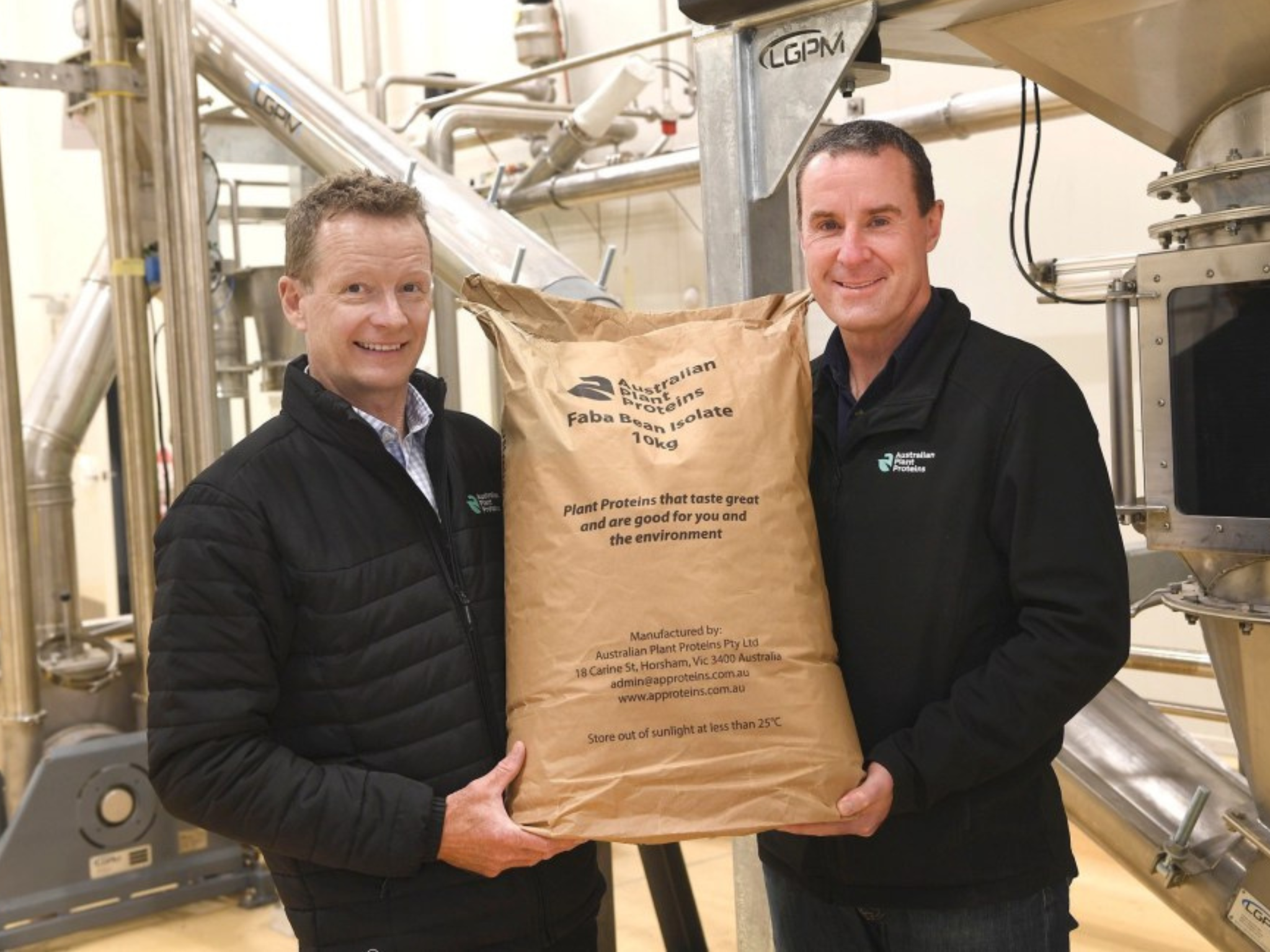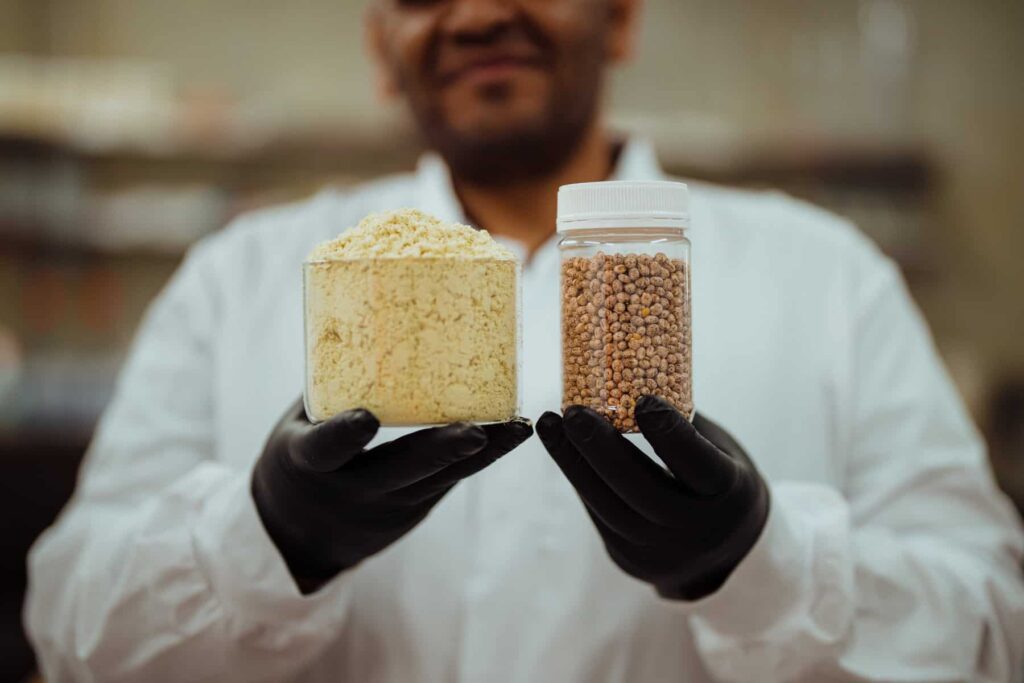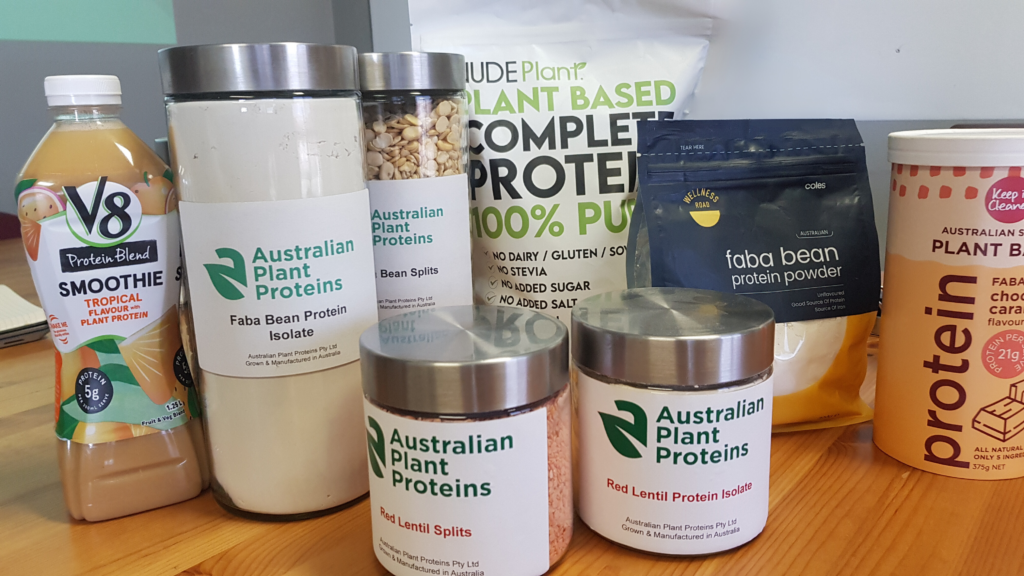
Without assertive policy changes and a national strategy, Australia risks being outpaced by other countries on plant protein manufacturing, says a new report.
Australia possesses strong crop production and an existing global footprint in wheat protein ingredients, but it is missing out on high-value manufacturing of protein-rich crops. What it needs is a national strategy to boost production and become a leader in the international market for these products.
That’s according to a new report by think tank Food Frontier, which argues that Australia is at risk of conceding its future market share in plant protein manufacturing to countries with better policies and an established national plan.
Australia produces around 59 million tonnes of protein-rich cereals, pulses and oilseeds every year, including a vast majority of the crops used for plant proteins. It’s the global leader in lupin production, and is a major producer of wheat, barley and canola, with high growth potential for fava beans, lentils and chickpeas too.
Yet, the country exports roughly 65% of its grain into global commodity markets annually. In 2023, Australia shipped out 41 million tonnes of protein-rich source crops, but imported 118,000 tonnes of plant protein ingredients.
“This disconnect points to a critical missed opportunity: a shift from bulk exports to high-value processing could enable greater domestic economic return, support regional resilience and meet growing demand for quality ingredients,” the report notes.
The challenges plaguing Australia’s plant protein manufacturing

Food Frontier suggests that the demand for plant proteins is high among domestic manufacturers, with 12% of nearly 3,000 audited products including such ingredients, from isolates to concentrates. Consumers, meanwhile, want options high in protein and rich in fibre, with clean-label and allergen-free formulations. And shifting dietary patterns are fuelling the adoption of plant-based foods.
Global buyers (especially in Asia) are increasingly looking for sustainable and traceable ingredients aligned with Australia’s production strengths. Its plant protein manufacturing sector includes six firms, with Manildra Group the largest and oldest. It’s joined by Essantis, Integra Foods and Australian Plant Proteins, Wide Open Agriculture and Hemp Harvests.
“Compared to global peers, Australia’s capacity remains limited, with significant barriers to achieving the scale and efficiency needed to compete on cost,” the report says.
Uptake of plant proteins is hindered by limited awareness or understanding among food manufacturers and a lack of technical support, while high costs and supply chain gaps make it difficult for ingredient producers to compete with cheap imports.
Infrastructure and R&D are costly, and companies are financially constrained. But financing is a. challenge, as investors are cautious without catalytic public co-funding. There are also supply chain gaps, inconsistent logistics and utility services, and fluctuating raw commodity markets to contend with.
Plant protein manufacturers also face some key regulatory hurdles, particularly those working with industrial hemp, which faces outdated and inconsistent regulations that restrict adoption, marketing and investment.
What Australia’s government must do to support this industry

Despite the challenges, a host of opportunities exist for Australia’s plant protein manufacturing sector. It can supply high-quality, functional ingredients that meet shifting consumer and company priorities, especially in Asia-Pacific, where provenance is a key differentiator.
Replacing imported ingredients with local alternatives can enhance supply chain resilience and reduce exposure to trade volatility. Domestic production can also add significant value to otherwise unprocessed crops, providing greater economic certainty for farmers.
Secondary ingredients could serve as feedstock for biomanufacturing applications to link plant protein production to the country’s broader bioeconomy goals. Moreover, strategically located facilities can reduce freight costs, valorise co-products and build supply chain resilience.
To meet these opportunities, the report identifies five strategic priorities for the Australian government:
- Establish a national taskforce of government members, industry stakeholders, farmers, investors and researchers to set a country-wide strategy for plant protein manufacturing. This would help align jurisdictional policy, infrastructure and investment and mitigate risks.
- Invest in shared R&D platforms for crop breeding, processing optimisation, ingredient functionality, product application, and byproduct valorisation to accelerate innovation, generate technical evidence, and reduce the financial burden on individual manufacturers.
- Drive demand generation and reduce adoption barriers via targeted marketing, reformulation incentives, traceability systems, and data on ingredient usage and trade flows. This would build market confidence and position Australia’s ingredients competitively.
- Scale up manufacturing by strategically investing in regional hubs, shared infrastructure and capital co-investment frameworks, which would help overcome capital intensity barriers, support food security, and deliver regional value.
- Build the workforce and regional supply chains through targeted training, farmer engagement and regional ecosystem development, an effort that will address critical skills shortages and ensure growers are equipped to meet evolving demand.
“With national leadership and coordinated implementation, Australia can realise the dual opportunity set out in this report: to position Australian-made ingredients as premium, provenance-led products, and to secure a leading role in the next wave of global plant protein diversification,” reads the report.
The post Australia Must Develop National Strategy for Plant Protein Production to Meet Future Food Potential appeared first on Green Queen.
This post was originally published on Green Queen.